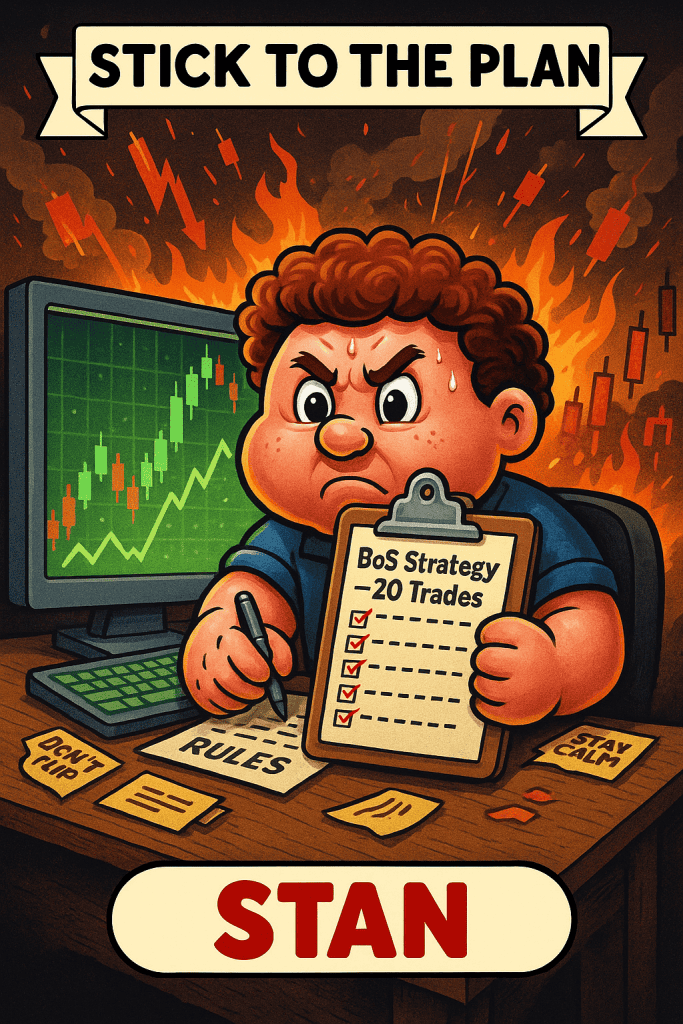We’re now on Trade 12 of 20 in our commitment to execute the 1-Minute BoS Sniper Strategy with discipline.
And today? Today was a test.
After yesterday’s lesson on trusting higher timeframe bias, I came in focused on doing things right. So when the setup showed up the first time—1-minute BoS, volume, clear structure—I didn’t take it. My higher timeframe bias was bearish, so I passed.
And of course… that trade would have worked.
Price tagged liquidity to the penny and ripped straight to TP2. Here’s what that looked like:
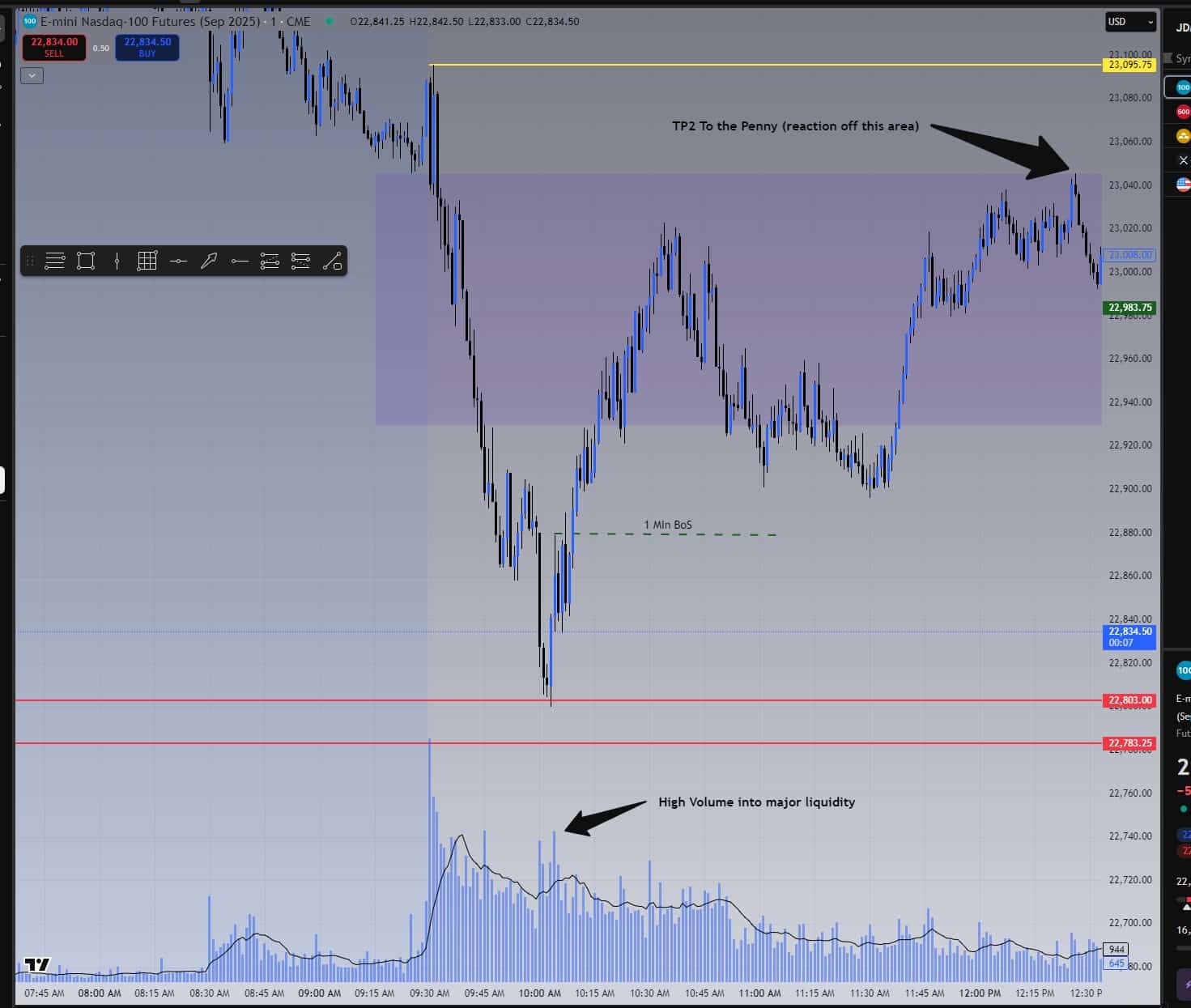
So when the setup appeared again—this time with a small spike in volume near the 10 SMA and a retrace into a 15-minute FVG—I took it. I was stopped out almost immediately.
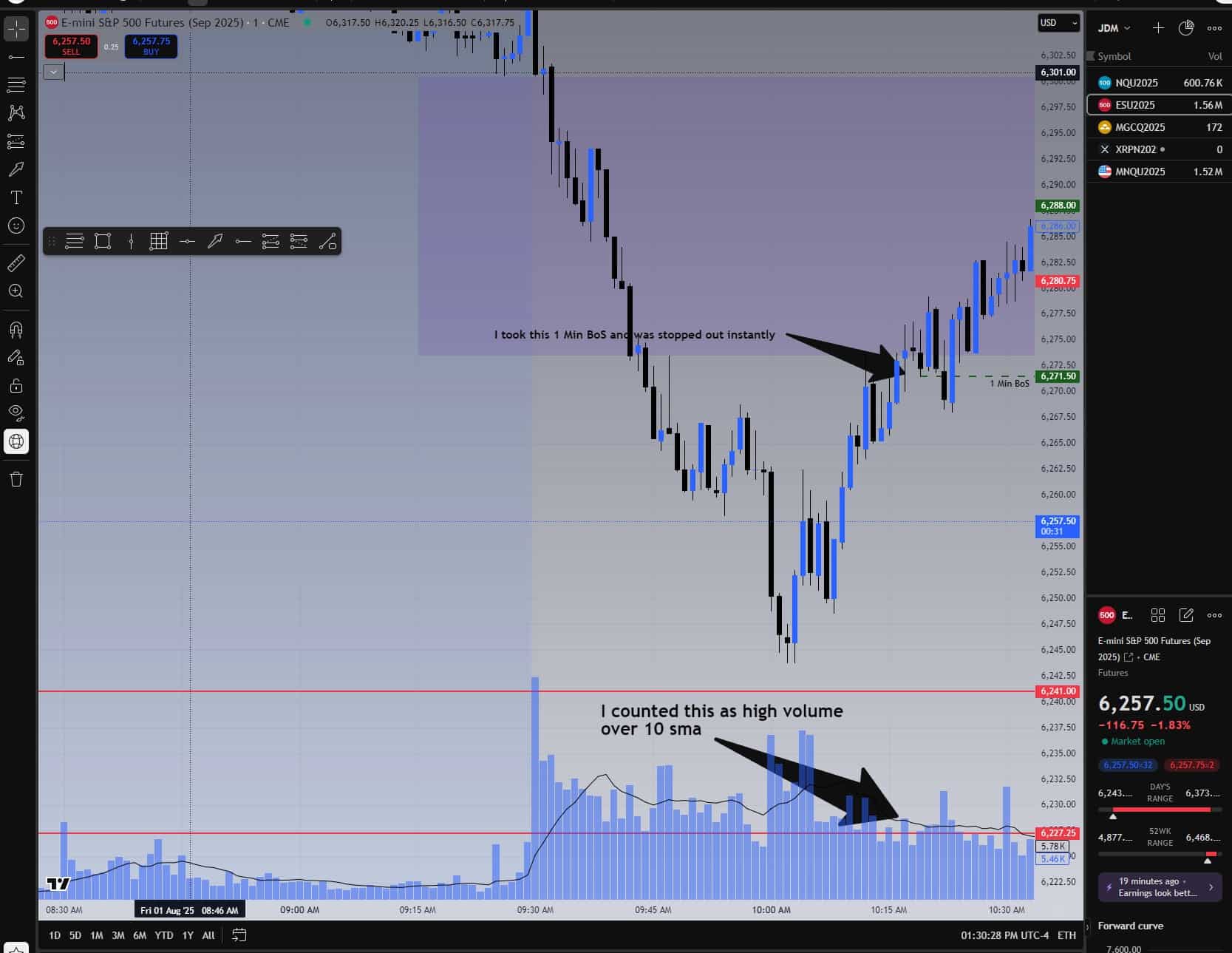
Was the setup valid? Yes. But I wasn’t in the best mindset. I felt like I had fumbled the first one. And I “knew” this setup would come again. Classic trap. Plus, I got a terrible fill on Topstep (not a complaint, just a fact), so I was down $225 fast.
At that point, I broke a rule.
I took the same setup again.
It wasn’t revenge trading in the explosive, emotional sense—but it definitely wasn’t detached execution. I saw the same pattern play out: high volume spike into the 15-minute FVG, a fresh BoS—and I took it. This time, I managed it better. Took some early profit to reduce risk, and ended the day down just $48 instead of taking the full hit again.
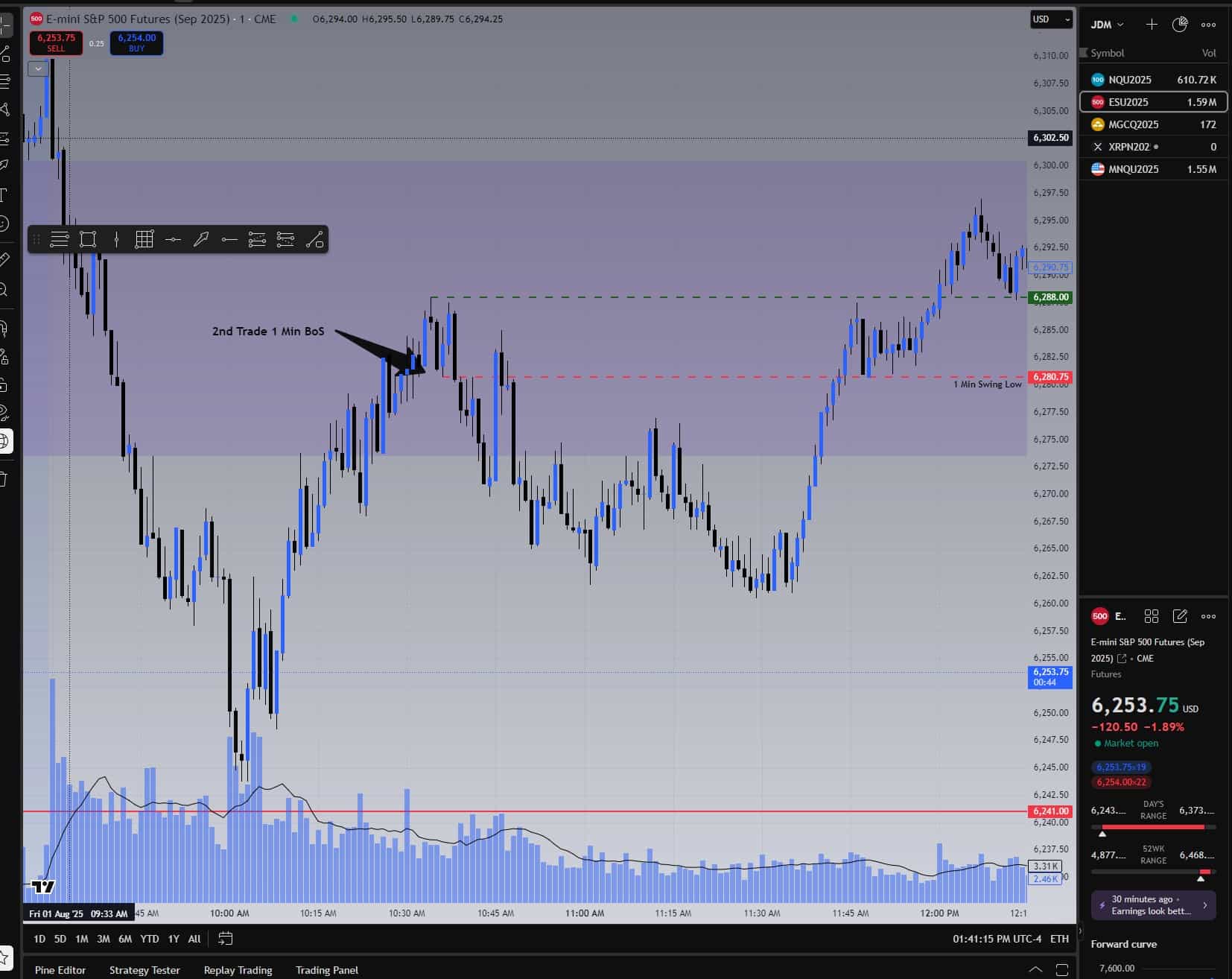
Let me be clear: you don’t see me getting mad and blowing up the account.
You don’t see me revenge trading with oversized positions. I took the same setup, with the same risk, even though I shouldn’t have taken another trade at all.
That doesn’t make it okay. But it does show growth.
And that’s what you need to be asking yourself:
Are you staying in control?
Are you managing your risk?
Are you taking the same setup each time so you can actually learn from your results?
If the answer is no, then you’re not trading—you’re reacting.
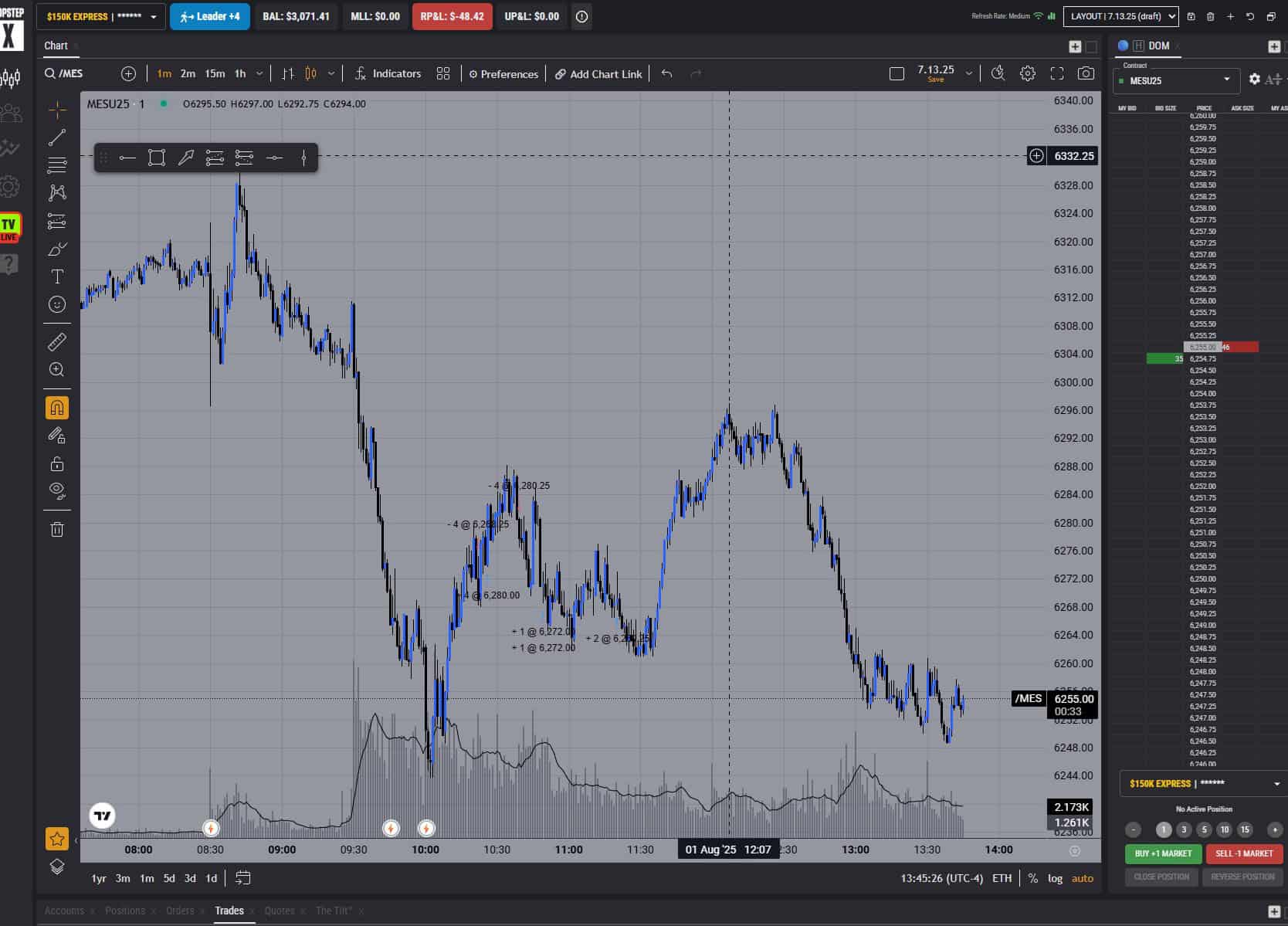
This hasn’t exactly been a hot streak. We’ve had a lot of losses with this strategy so far. And while every day, every week, and every month won’t be profitable—that’s just part of trading—it still stings.
But that’s why we’re doing this.
If we jump ship after a handful of losses, we never give the edge a chance to reveal itself. And more importantly, we never find out what actually needs to be fixed. Real progress only happens after enough data is collected. That’s the purpose behind the 20-trade commitment.
Today is just another day of data. That’s all.
Every trade—win or lose—is a datapoint. We’ll analyze the full sample when we hit 20. Then we’ll evaluate. Then we’ll adjust. Not now.
What We’ll Learn After 20 Trades
- Is the edge truly profitable as designed?
- Are we more successful with or without volume confirmation?
- Does trading with higher timeframe bias matter?
- Are our entries too early? Should we wait for deeper pullbacks?
- How much does TopStep slippage impact real results?
- Are we better off taking full TP1s, or is holding for TP2 hurting us?
These are not decisions we’ll make emotionally. These are changes we’ll only consider after the full 20-trade set is complete.
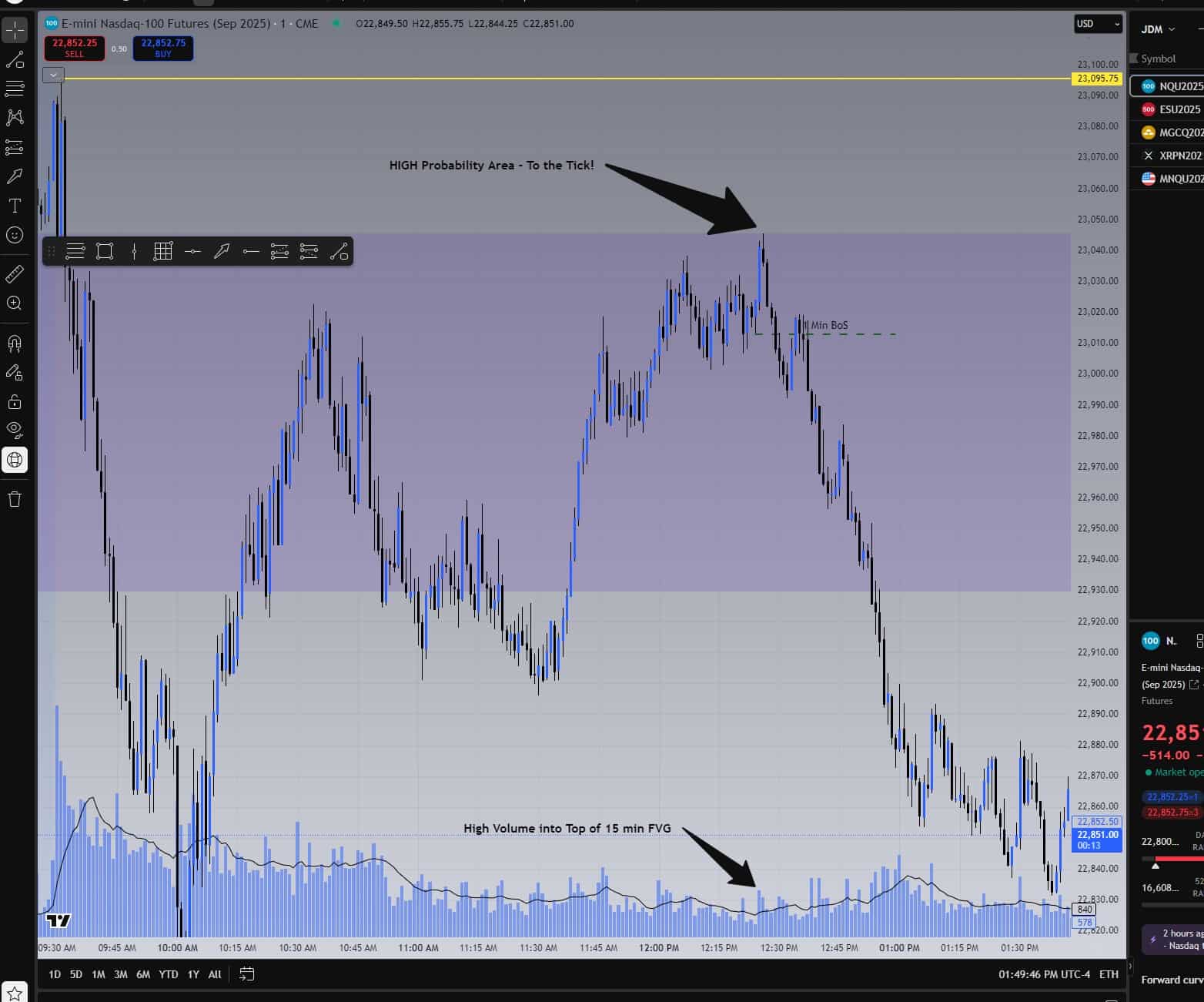
This is why we log every trade and track our reactions. So that by trade 20, we’ll have clarity.
Whether you’re using this strategy or your own, you should be doing the same thing: taking the same setup, day after day, and documenting the outcomes. That’s the only way to refine your edge. And if you take more than one trade per day—as I did today—make sure it’s the same setup. That way, your data is still useful.
Profit comes from staying in the game and sticking to a system long enough to let the probabilities work.
That’s how we win—not by guessing the future.

